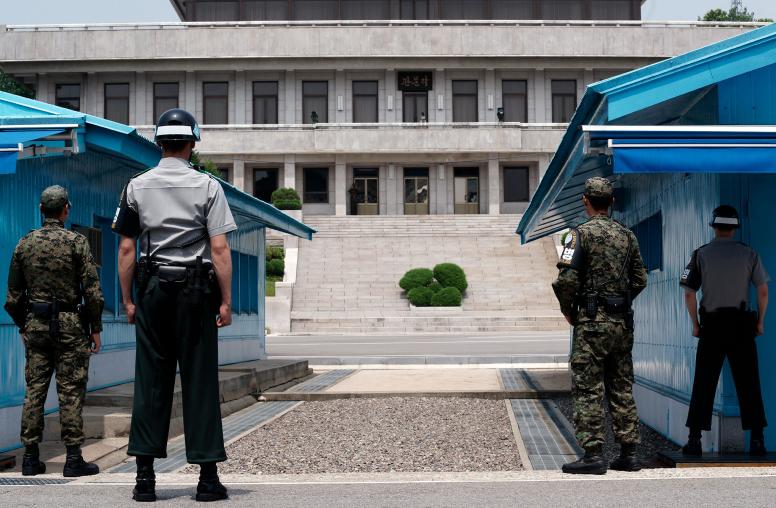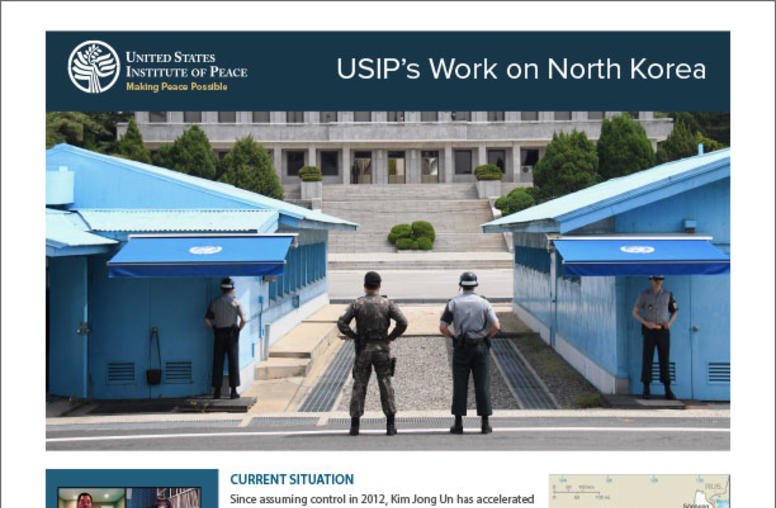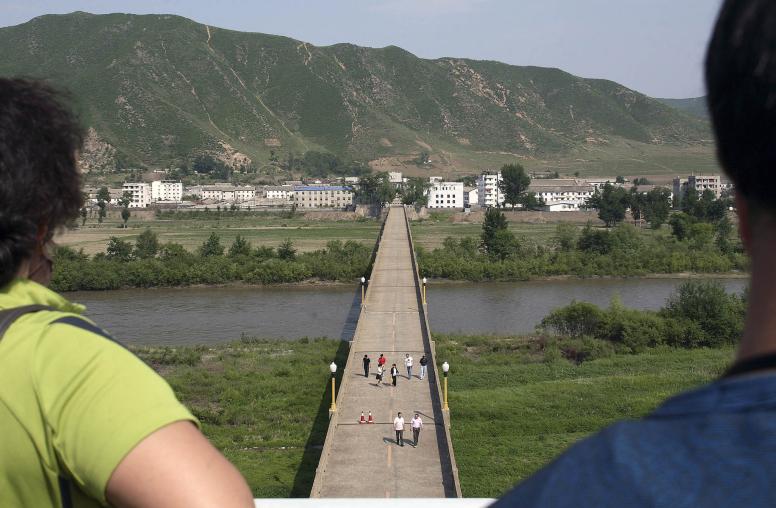Making Sense of North Korea’s Missile Test
The test caused alarm in South Korea and Japan, but was Kim Jong Un trying to get the United States’ attention?
North Korea announced on September 13 that it had tested long-range cruise missiles over the weekend. It described the missiles as a “strategic weapon of great significance.” The test caused alarm in North Korea’s neighbors — South Korea and Japan, both U.S. allies — as the revelation now puts both countries within striking distance. But despite the test, a spokesperson for the Biden administration said the United States remains prepared to engage with North Korea. USIP’s Frank Aum discusses the significance of the tests, the arms race on the Korean Peninsula, and what signals North Korean leader Kim Jong Un may be sending to the United States with this latest test.

What do we know about the missiles North Korea tested over the weekend? And what does the test indicate about North Korea’s technological advancements?
According to the Korean Central News Agency, North Korea’s official news outlet, the country successfully launched two long-range cruise missiles last Saturday and Sunday. The missiles flew more than two hours, changed trajectories in circular patterns, and hit targets 1,500 kilometers away.
North Korea’s announcement called the cruise missiles, which unlike its ballistic missiles are not prohibited by international law, a “strategic weapon of great significance” that would provide “another effective deterrence means” against “the military maneuvers of hostile forces.” Cruise missiles can fly at low altitudes using circuitous routes, thereby strengthening North Korea’s ability to evade missile defense radars and potentially deliver nuclear weapons.
South Korea recently tested a submarine-launched ballistic missile and is conducting its own arms buildup. Are we seeing the signs of an intensifying arms race on the Korean Peninsula?
The Korean Peninsula has already been locked in a chronic arms race since the end of the Korean War in 1953 as both sides try to maintain sufficient military deterrence capabilities. In fact, the U.S. deployment of tactical nuclear weapons in South Korea in 1958 likely sparked North Korea’s own desire for nuclear weapons. The arms race intensified with North Korea’s serious pursuit of nuclear weapons and ballistic missiles in the early 1990s. As it became clearer that North Korea intended to develop and maintain its nuclear weapons, including a period of nuclear and ballistic missile tests between 2006 and 2017, the United States and South Korea began ramping up their own indigenous and combined military capabilities.
In recent years, as South Korean President Moon Jae-in’s administration pursues defense reform that uses advanced military capabilities to deter and defend against the North Korean threat, offset reduced troops numbers and accelerate the transition of wartime operational control from the United States to South Korea, the rate of increase in Seoul’s defense spending has hovered around 7-8 percent, compared to the 4 percent of his predecessor. And based on North Korea’s own military buildup plan announced in January, it already appears that it is monitoring the South’s capabilities with one eye while keeping the other on the United States.
What is the significance of the timing of the tests, which come days before the Chinese foreign minister is scheduled to meet with his South Korean counterpart, as well as meetings between the U.S. special representative for North Korea and his South Korean and Japanese counterparts?
We can only speculate about the timing of North Korean provocations. Some tests are tied to internal technical development timelines or for domestic signaling. There have been many diplomatic meetings between South Korean and Chinese officials or among South Korean, Japanese and U.S. counterparts without any preceding tests so it’s difficult to draw a relationship between the cruise missile tests and any upcoming meetings. However, given North Korea’s promise to respond to the August U.S.-South Korea joint military exercises, and its statement that the missile tests were a demonstration of deterrence against “the military maneuvers of hostile forces,” it appears likely that the alliance military exercises were at least one factor.
Are you seeing any signs that Kim Jong Un is eager to return to the negotiating table with the United States? And, if so, could the tests be seen as North Korean signals toward the Biden administration?
There haven’t been any clear signs that Kim Jong Un is willing is accept the U.S. offer to meet with North Korea “anywhere, anytime, without preconditions.” Instead, Pyongyang appears to be treading water while it addresses a “tense” food situation and a “grave incident” related to COVID-19. North Korea is also frustrated by the Biden administration’s unwillingness to provide “corresponding measures” (e.g., partial sanctions relief) for the range of conciliatory actions that the regime took in 2018, including the moratorium on nuclear and long-range missile tests, the release of three U.S. detainees, the delivery of 55 boxes of U.S. remains and the shutdown of its nuclear test site at Punggye-ri and missile engine test stand at Dongchang-ri.
The latest cruise missile tests could be both a signal to the United States about North Korea’s displeasure regarding the joint military exercises as well as a hint of future actions to come if the Biden administration doesn’t improve its offer beyond unconditional meetings.



